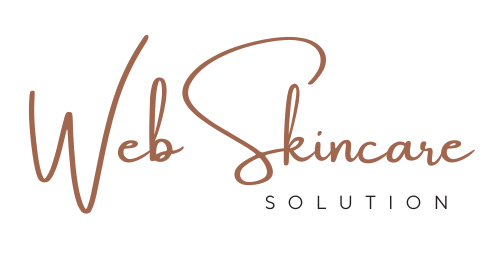Have you ever wondered the difference between pantothenic and hyaluronic acid?
Is one better than the other? Can they be used together? And what differs from them? These are some of the questions we will be answering in the post, so keep on reading to learn more about these two types of acid.
The following is a brief description of each acid and its main benefits.:)
Quick declaimer: as the owner of the website I have tracked down some of the products and services mentioned. Therefore, when using the links on this page to make a purchase I may get a small commission. Full Disclosure.
Hyaluronic Acid
Hyaluronic acid is a type of sugar molecule that gives ‘plumpness’ to the skin. It also has powerful anti-ageing properties.
Natural hyaluronic acid is found in the fluids surrounding the eyes and joints. It protects the joints and other tissues by providing cushioning and lubrication. The body’s response to injury and swelling can also be influenced by hyaluronic acid.
Hyaluronic acid is used in skin care products as a humectant to help the skin retain water. It hydrates the outer layers of skin, resulting in a more radiant and youthful-looking complexion. Your skin becomes more flexible when you use it and helps alleviate dry skin.
In addition to alleviating dry skin, reducing wrinkles, and speeding up wound healing, hyaluronic acid has many other benefits for the skin.
The benefits of hyaluronic acid are impressive: *Promotes cell regrowth, *Re-hydration,*Helps skin retain moisture, resulting in a supple, radiant complexion and it strengthens skin elasticity and plumpness.
Also, melanin production can be prevented, resulting in a more even complexion and a reduction in pigmentation.
Hyaluronic acid is sold as a cream or gel and can be applied topically or ingested as a dietary supplement.
Pantothenic (Vitamin B5)
Pantothenic acid also known as vitamin B5, is often found in skincare products. It is a moisturizing and anti-inflammatory agent.
As a vitamin B5 molecule, pantothenic acid converts carbohydrates into glucose to provide energy once consumed. B vitamins aid the body’s metabolism of fats and proteins, as well as maintaining a healthy nervous system, skin, hair, eyes, and liver.
In addition, it is also applied topically not only as a skin care product but also as a supplement.
Among its many benefits, pantothenic acid
*Hydrates, *soothes and *moisturizes the skin. As an *anti-inflammatory, it also aids in repairing the damaged skin barrier.
For instance, it has been shown effective in treating dry and rough skin, as well as inflammation caused by atopic dermatitis or eczema.
Is vitamin B5 the same as hyaluronic acid? Is one better than the other?
Both combat dry skin and protect the skin from premature ageing. Both hydrate and soften the skin.
The added benefit of vitamin B5 over other moisturizing ingredients like hyaluronic acid, however, is that it acts as both an emollient and a humectant. A humectant attracts and binds water to the skin, whereas an emollient seal’s crack in the skin and keep it moist.
Hyaluronic acid is stable and less likely to break down into smaller molecules. In contrast, pantothenic acid is more prone to turn into smaller molecules, which can become too small to be absorbed by the body.
Hyaluronic acid can be an effective moisturizer, while pantothenic acid would be better placed in a moisturizer with additional beneficial ingredients (such as skin-benefiting vitamins).
Check out: Is pantothenic acid good for your skin?
Can hyaluronic acid and pantothenic acid be used together?
The answer is yes. Mixing hyaluronic acid with panthenol hydrates even deep skin layers and can be used by anyone.
They are often combined as one product. For example, The Ordinary Hyaluronic Acid 2% + B5 contains (as you can clearly see), both hyaluronic acid and vitamin B5. The formula helps provide lasting hydration as well as visible plumping and moisture retention.
In addition, by combining three different types of Hyaluronic Acid, The Ordinary Hyaluronic Acid 2% + B5 penetrates deeper into the skin to give you maximum hydrating effects.
Hyaluronic acid + vitamin B5 (pantothenic acid)
Hyaluronic acid with vitamin B5 acts as a moisturizer to keep the skin hydrated and maintain its elasticity. By adding B5, hyaluronic acid hydrates the skin and helps it retain moisture. The skin retains moisture by attracting up to 1,000 times its weight in hyaluronic acid.
The water content of hyaluronic acid with vitamin B5 is naturally up to 70% of its weight. It slows down premature ageing and promotes skin repair.
Both hyaluronic acid and vitamin b5 hydrate and plump the skin, combating dehydration, which can lead to dullness, flaking, fine lines, and discomfort.
Can they address dry skin?
Vitamin B5 and hyaluronic acid serum are cost-effective remedies to treat dry skin and ageing skin. Water is suspended in the serum, which is an essential part of repairing the skin. As a result of the water, the ageing process is slowed down. Vitamin B5 serums can improve your skin’s look and feel, and they reach the deepest layers of the skin to repair it.
Some people have breakouts due to food sensitivities. It has been proven that many people have improved their breakouts when they discover what their bodies can’t tolerate.
In our skin, hyaluronic acid with Pantothenic Acid absorbs and binds up to 1000 times its weight in water. Skin cells and surrounding tissues can be shielded and plumped by it, and it is commonly used in cosmetics as a facial filler. Researchers have also discovered that it suppresses the release of certain chemicals, such as those that cause inflammation.
A great choice for dry, rough, or flaky skin, both hyaluronic acid and vitamin B5 are humectants (attract moisture).
Both acids can play a significant role in firming and nourishing your skin. However, when combined, it becomes even more effective, and a great place to start is with The Ordinary Hyaluronic Acid 2% + B5. After applying it topically, many people report smoother, softer, and fuller skin. 🙂





